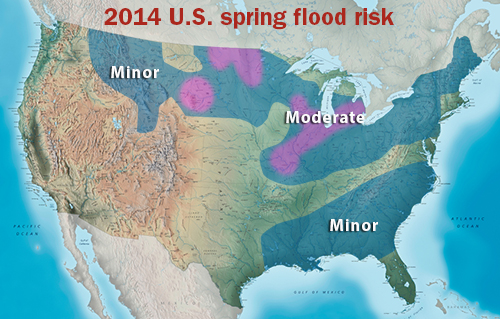
by Amanda Smith, Associate Editor
We've been stuck in a weather holding pattern. Some of us have been subjected to extreme cold and blizzard-like conditions for the last five months, while our western counterparts have experienced one of the driest winters on record. This weather dichotomy playing out on U.S. soil creates varied environmental risks come spring, depending on how your winter played out.
According to NOAA's (National Oceanic and Atmospheric Administration) spring outlook, rivers in half of the continental U.S. are at a minor or moderate risk of exceeding flood levels in the coming months. The southern Great Lakes region has greatest threat of water leaving its boundaries, due to an above-average snowpack and a deep layer of frozen ground.
The continued winter mix, combined with an above-average snowpack, frozen ground and thick ice on streams and rivers, will delay spring flooding into April in the upper Midwest and westward. Flood intensity will depend on the rate of snow and ice melt, along with future rainfall.
On the opposite coast, significant drought conditions are expected to be widespread throughout California and the Southwest. Drought is expected to persist or intensify in many areas because of below-average rain or snow this winter and the onset of the dry season in April.
Below normal temperatures are expected from Montana eastward. Warmer than normal conditions are anticipated in the West, Southwest and Southeast.








